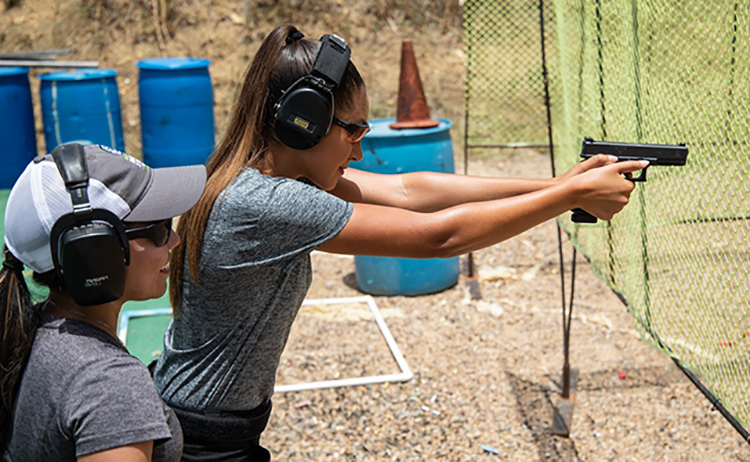Whether you are training for self-defense or a sport like hunting, shooting with moving targets can be an exhilarating experience. Practicing these skills can increase confidence and prepare you for any real-life situation. Shooting on moving, turning, and running targets can also improve accuracy. These targets are a great tool to improve the ability to identify the threat, narrow your focus while aiming and apply proper fundamentals.
Increased Awareness
It would be best to push yourself beyond traditional targets to get serious about your firearms training. Dynamic live-fire AR500 Targets provide the challenge to develop your skills, improve accuracy, and better assess real-life scenarios. During the pretest, participants received a playing card and were asked to keep it until the end of the experiment (this way, we could match their data sets without knowing who they were). They then entered the shooting range, where they were given instructions for the tests they would be doing. The control group got traditional firearms training, while the intervention group received specially developed training based on state-of-the-art empirical findings in cognitive psychology. Both groups were then shown video scenarios and completed a pretest before and post-test after the training. This allowed us to determine if the training improved their decision-making performance and tactical perception skills in these realistic shoot/don’t-shoot situations. The results showed that it did.
Improved Accuracy
Shooting moving targets is a unique training challenge that provides additional focus on accuracy and the importance of proper gun handling. It also helps train the mind to recognize and understand what is happening with a target. This research examined police cadets’ performances in simulated threat-based shoot/don’t-shoot scenarios before and after two different types of firearms training. The control group underwent traditional firearms training, while the intervention group received theory-based training based on state-of-the-art empirical findings in cognitive psychology and focused on tactical gaze control. The practical part of the training began with abstract targets (rectangles and circles). It progressed to semi-realistic targets (torso silhouettes with pictogram hands and objects) and then to photographs of persons. The participants were instructed to actively shift their attention and gaze toward the hands of the person-shaped silhouettes or photographs to make threat-based shoot/don’t-shoot decisions. The results showed that the 90 min of theory-based intervention training significantly improved participants’ decision-making performance in shoot scenarios and weapon handling during the post-test. In contrast, their decision-making performance in don’t-shoot scenarios did not differ by training type. This suggests that training in perceived threat assessment should be integral to law enforcement officers’ ongoing training regimens.
Increased Flexibility
Using specialty targets, you can train on different facets of your pistol or rifle to improve marksmanship and get more reps out of each training session. These target sets allow you to focus on resetting your trigger, weapon manipulation, cadence, and throttle control. It’s easy to lose focus during high round count drills, and accuracy tends to suffer. This target will show you exactly where you are missing and help correct the problem. Law enforcement officers must be able to identify a threat, narrow their focus while aiming, and apply sound fundamentals to respond to dynamic, unpredictable real-world situations effectively. The 90 min of theory-based shoot/don’t-shoot decision-making training in this study had positive effects on participants’ muzzle position and response time, but further research is needed to explore a more practical way to incorporate this type of training into the training schedule of police cadets and experienced officers. Using tactical training equipment like ARTargets allows you to do just that.
Increased Motivation
Whether you want to become an elite marksman, train to be a law enforcement officer or defend yourself, you must have the will and motivation to perform at your best. With it, you will perform to your established training level, which could be enough to win the fight. Shooting moving targets can be exhilarating, challenging, and fun for gun enthusiasts. But they also provide a unique way to prepare for realistic attack scenarios. The researchers examined police cadets’ performance in shoot/don’t-shoot decision-making training using video scenarios before and after two different types of firearms training. The control group received traditional firearms training, while the intervention group received training based on state-of-the-art empirical findings in cognitive psychology. Both groups improved their decision-making performance in the shoot scenarios from pre to post-test. However, the training based on signal detection theory significantly improved their decision-making performance in don’t-shoot scenarios. This is significant because it shows that it’s possible to develop practical ways of teaching tactical gaze control and visual attention tactics that enhance law enforcement response preparation and execution in real-world shooting scenarios.

